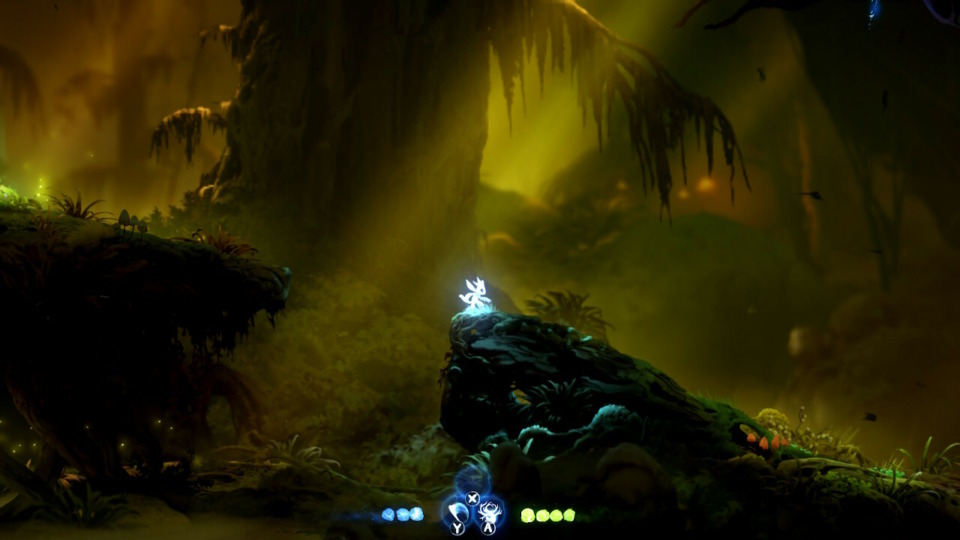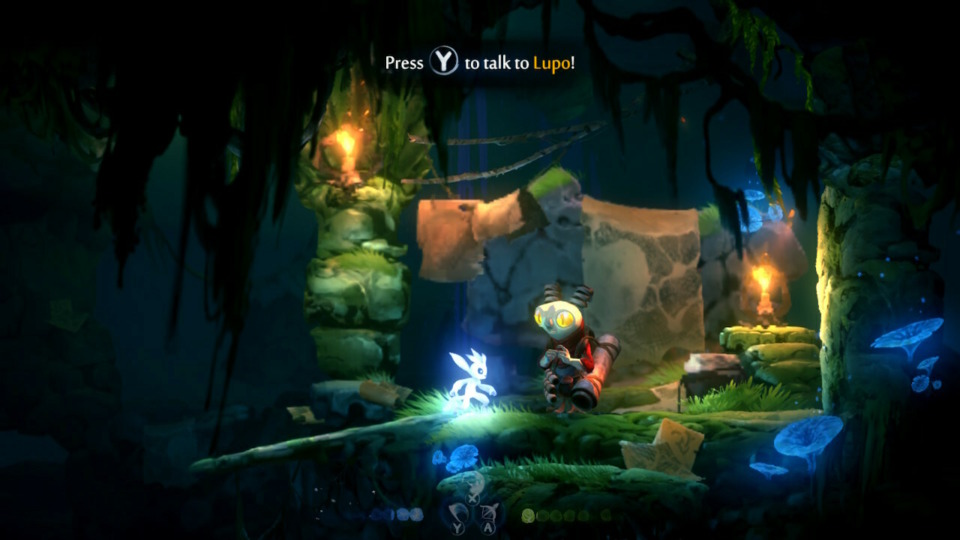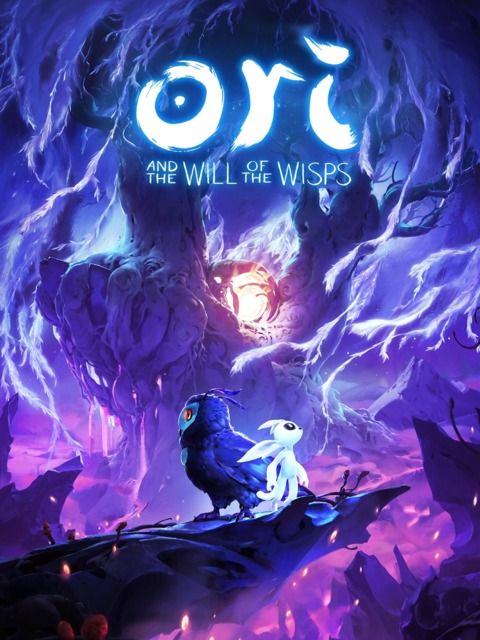
OK, look, I know it's yet another explormer (the fifth for IGotW this year, I believe?) but I have a couple of good reasons for this one's inclusion: the first is that Ori and the Will of the Wisps is the highest-profile game in this genre since 2019's Bloodstained: Ritual of the Night and worthy of a review by any standard, and the second is that I'm starting to feel like my explormer bona fides are in dispute after a recent Bombcast email on the genre prompted zero discussion of my own particular nomenclature from anyone on the podcast or indeed the chat. I've almost filled all one hundred slots of my first Explormatorium list with the finest examples of the explormer genre, not to mention countless reviews like this, but evidently more work needs to be done; where better to resume said work than with a widely beloved game that saw serious consideration during Giant Bomb's 2020 Game of the Year deliberations?
Fine, fine, this is all a weak pretense to play and blog about one of my favorite genres for yet another week, but with the stress of E3 on the horizon - albeit a heavily compromised digital version - I could use something as enjoyable and comparatively chill as Moon Studios's beautiful and balletic forest creature antics to keep myself on an even keel. The sequel to Ori and the Blind Forest (high on my 2015 GOTY list, despite a lot of competition), Will of the Wisps picks up a little while after the bittersweet ending of that story and strands Ori in a new part of that arboreal world after a sudden storm during a flight. Immediately, you're picking up the tools of the trade one after the other: a melee attack, a double-jump, and a dash (which also works in mid-air) are quickly added to your repertoire upon starting, with many to follow as you continue to expand the contours of this new world and meet its friendly and not-so-friendly inhabitants.

Will of the Wisps has also evidently been taking copious notes from Team Cherry's Hollow Knight, by adopting its badges into a new shard system - you can equip a small handful of bonus passives and upgrade same, with opportunities to increase how many you can equip at once - and adding a jovial cartographer character who's happy to help you fill the blanks in the local topography should you be able to find him and have enough currency for one of his bespoke maps. The game follows that first melee attack with several variants to choose from, giving you three active slots - that is, the three face buttons that aren't the jump button - to equip your favorites. Right now I've equipped that initial light melee slash, a heavier melee strike that can also break certain walls, and a ranged attack; the latter two proving helpful when exploring as well. Following the Hollow Knight comparison, there's also at least one healing spell that takes a few seconds to cast; the idea being that you need to carve out a moment of respite in a longer fight (say with a boss, or one of the game's wave-based "combat shrines") before you can hope to make use of it. You then have your usual mix of health and mana upgrades scattered around the map, as well as a few collectables I've only just discovered a use for; suffice it to say, there's plenty to find as you scour the vicinity for hidden caches and the like, and the map will occasionally oblige you by marking currently-unreachable collectables in zones you've explored for later sweeps.
Can't really go much further with this review without talking about the game's visuals. Ori and the Blind Forest made a strong impression with its dreamlike painterly art direction and the sequel, if anything, somehow manages to be even more attractive. Something I noticed this time around was the excellent use of sound design: the orchestral score swells and dips to coincide with the action on-screen, as well as elevating the emotive power of certain sad or exhilarating moments. It feels organic, molded around not just the world and the events of the game but the player's participation in same, and it's one of those remarkable achievements that's sometimes easy to miss due to how indelibly it weaves itself into the presentation.

Like the first Ori, it's easy to get sidetracked by the looks and forget how smooth and fluid those platforming controls can be. I've only had a few issues where it felt a little imprecise at parts - especially trying to air control your little guy to land on narrow platforms - but it's just taken a mite of effort to adjust to that over-responsiveness where I no longer experience it. Easy to overcorrect, you might say, until you get the intended rhythm down. Now that I've put a few more hours into it and have tempered my skills with a few trickier instances - there are some real tough time trials and the occasional boss "chase" that demands your platforming skills be at their apex - I've found that it feels more natural, though there still feels like a tremendous amount of input lag on the Switch version I'm playing that occasionally makes the trickier sequences a more frustrating affair. I'm dying a lot, though it's not so bad to be a dealbreaker given the fast respawn; it feels like a little more optimization for relatively weaker platforms could've been warranted however, where perhaps maybe some of the flashier effects could be toned down for stability's sake. (Even when the input's not being deleteriously laggy at a critical moment, there's often a conspicuously long pause whenever you try to get in and out of the menu/map while playing.) Will of the Wisps also emphasizes combat more than The Blind Forest - it has those aforementioned wave-based shrines, and the more elaborate active skill system - strengthening this bond with Hollow Knight and other 2D "Soulslikes" like Salt and Sanctuary even further; it's not the game's highlight, but I also recognize that it's not under-developed afterthought with all these mechanics dedicated to mixing it up.
This probably isn't going to be a huge shock, but overall I'm loving this game and it's every bit the strong entry in the 2D explormer genre that its predecessor was. For the most part the expanded mechanics have either enhanced what was already great or have allowed the game to push certain elements - the combat, for instance - to hitherto unexplored levels of depth. Some of the more recent traversal skill acquisitions, despite some familiarity, have really expanded the fluidity and motion of what you can do and where you can go, given a conducive environment, and it's already hitting that point of any explormer where I'm flying through the parts of the game that aren't meant to be challenging and taking my sweet time with those that are. I fully intend to 100% this one too before I'm done, if only for an excuse to keep enjoying that smooth movement as I bounce from one collectable to the next.
Rating: 4 out of 5. (I'm not sure what it is, but it just doesn't feel quite as sharp as the previous. The races, which on top of being unpleasantly difficult, work to really highlight the issues with the game's new traversal tools when you need them most. Little snags like the way the automated grappling process doesn't always work because it's too slow to highlight the relevant parts of the environment (or ignores them completely), or how it sometimes "forgets" to refill your stock of jumps and double-jumps if you just brush across a platform's surface instead of standing on it firmly. The graphics are certainly elegant, but the underlying cogs and gears are far less so; impressionism has often been a problem in precision-led platformers like this in the past for this reason, since it's hard to map - or intuitively parse - specific hitbox/collision contours onto something so... ethereal. Much of this could be the fault of the Switch port though which as mentioned has a few problems trying to keep up with the more powerful Xbox One original version.)
| < Back to 222: PuzLogic | The First 100 | The Second 100 | > Forward to 224: Clam Man |

Log in to comment